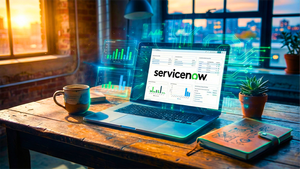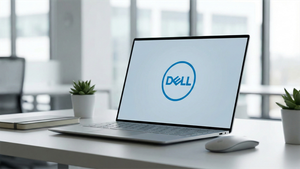
The global Initial Public Offering (IPO) market is experiencing a notable resurgence in 2024 and the first half of 2025, signaling a renewed investor appetite for new listings. After a period of muted activity, this uptick has reignited discussions about "frothiness"—a condition where asset prices become detached from fundamental value, driven by speculation and market hype. While the strong demand for new listings presents lucrative opportunities for companies and early investors, it also raises critical questions about the sustainability of current market enthusiasm and the potential for overvaluation, posing significant risks for public market participants.
This renewed dynamism, particularly in high-growth sectors, marks a pivotal moment, shaping capital allocation and defining the trajectory for a new wave of public companies. Understanding the drivers behind this surge and its potential implications is paramount for investors and the broader financial ecosystem.
Is the Market Too Hot? A Deep Dive into the IPO Surge
The IPO market's recovery has been robust, with global IPO proceeds increasing by 17% in the first half of 2025 compared to the previous year, reaching US$61.4 billion from 539 deals. The U.S. market, in particular, witnessed a significant rebound, with 165 IPOs in H1 2025, a 76% increase over the same period in 2024. This surge is attributed to stabilizing inflation, leveled-off interest rates, and strong stock valuations, which have collectively boosted investor confidence. Technology, Media, and Telecommunications (TMT) companies, especially those focused on AI, cloud computing, and cybersecurity, have been at the forefront of this activity, accounting for 24% of deals in Q2 2025. Industrials and consumer sectors have also shown strong activity, with Special Purpose Acquisition Companies (SPACs) making a comeback, representing nearly 37% of all U.S. IPOs in H1 2025.
The timeline leading to this resurgence began with a significant cooldown in 2022 and 2023, largely due to surging inflation and rising interest rates, which suppressed company valuations and increased market volatility. The recovery started in 2024 as inflation moderated and expectations of interest rate cuts emerged. Early 2025 began with optimism, although a brief pause occurred in April due to market volatility stemming from new U.S. tariff policies and geopolitical uncertainties. Despite this, the market demonstrated a strong rebound in the summer of 2025, signaling an end to the "winter freeze."
Key players driving this market include high-profile companies like Reddit (NYSE: RDDT), which debuted strongly in March 2024, and Viking Holdings (NYSE: VIK), the parent company of Viking Cruises, which executed the largest IPO of 2024 to date. In 2025, Circle Internet Group (stablecoin issuer) and AI company CoreWeave saw impressive day-one returns, highlighting investor enthusiasm for innovation. Investment banks such as Morgan Stanley (NYSE: MS), BofA Securities (NYSE: BAC), Goldman Sachs (NYSE: GS), and JPMorgan Chase & Co. (NYSE: JPM) have played crucial roles in facilitating these offerings, earning substantial fees. Initial market reactions have been largely optimistic, with strong institutional demand and positive aftermarket performance for successful listings, though tempered by a cautious awareness of ongoing macroeconomic uncertainties. This surge matters significantly as it indicates improving market health, enhanced liquidity, and a release of pent-up supply from companies that delayed their public offerings.
Winners and Losers in the Public Market Gold Rush
In this potentially "frothy" IPO market, certain stakeholders are poised to win big, while others face considerable risks, particularly public market investors.
Companies (Issuers), especially those in "hot" sectors like AI, crypto, and fintech, are significant short-term winners. They can achieve exceptionally high valuations, raising substantial capital to fund growth, reduce debt, and gain market visibility. Companies like CoreWeave and Figma (design software developer) have demonstrated this with significant first-day "pops." For fundamentally sound companies, this capital can fuel long-term growth and solidify market positions. However, companies going public with inflated valuations unsupported by robust fundamentals face substantial long-term risks, including significant price corrections and a struggle to meet aggressive market expectations.
Investment Banks (Underwriters) are clear beneficiaries. They earn substantial fees for underwriting new issues, and a high volume of IPOs directly translates to increased revenue. Firms like Morgan Stanley (NYSE: MS) have emerged as top global IPO bookrunners, benefiting from the buoyant market. While a market downturn could pose reputational risks, the diversified nature of their services typically mitigates severe long-term damage.
Early Investors, including venture capitalists (VCs), private equity (PE) firms, and company founders, are primary winners. A frothy IPO market provides excellent exit opportunities, allowing them to monetize their investments at attractive valuations and generate significant returns. The success of Reddit (NYSE: RDDT) and other recent listings has offered crucial liquidity events for their early backers. These successful exits also provide fresh capital for VCs and PEs to invest in new ventures, fueling future innovation. However, if the market corrects sharply, early investors who fail to exit promptly could see anticipated gains evaporate.
Public Market Investors, particularly retail investors, often face the greatest risks. They typically buy shares at inflated prices after initial trading begins, driven by "fear of missing out" (FOMO). While some may achieve quick profits from "first-day pops," many overvalued IPOs tend to underperform the broader market over a three-year period. Circle Internet Group's nearly 170% day-one return, while exciting, highlights the potential for rapid gains but also the inherent volatility. Investors who hold onto speculative, overvalued companies for the long term, expecting continued growth based solely on initial hype, often incur substantial losses as the market inevitably recalibrates to fundamentals.
Broader Implications: Industry Shifts and Regulatory Scrutiny
The current IPO surge is not an isolated event but rather a reflection of broader industry trends and carries significant wider implications. It fits into a narrative of economic recovery and technological advancement, particularly in sectors like Artificial Intelligence. The "AI boom" has emerged as a significant catalyst, drawing massive investor interest and driving IPO activity, especially for companies integrating AI into their business models. This trend is further supported by rebounding investor confidence and ample liquidity, with private equity firms eager to capitalize on rising valuations to exit their long-held investments.
The influx of new public companies creates substantial ripple effects. Increased competition can put pressure on existing players in industries where new, well-funded entrants emerge. For instance, a successful tech IPO like CoreWeave could intensify competition in the cloud computing and AI infrastructure space, potentially affecting established tech giants. M&A activity also tends to surge during IPO booms as companies seek to acquire talent, data, or intellectual property. Regulatory bodies are observing these developments closely. In the U.S., discussions within the SEC, NASDAQ, and NYSE are exploring both deregulation to simplify listing processes and stricter standards for micro-cap companies to enhance market integrity. Globally, countries like India, through its regulator SEBI, are implementing reforms to bolster their capital markets and encourage SME IPOs.
Historically, the current market draws comparisons to the dot-com bubble of the late 1990s, where an unprecedented number of tech IPOs, often with unproven business models, achieved sky-high valuations. While today's market has evolved with more private equity involvement and a greater focus on maturity before going public, the rapid growth of AI and heightened retail investor interest echo elements of that era. The 2020-2021 SPAC boom also serves as a recent precedent for alternative listing mechanisms, with SPACs seeing a resurgence in 2025. These historical parallels underscore the importance of scrutinizing valuations and avoiding "irrational exuberance" to prevent a similar market correction.
What Comes Next: Navigating a Dynamic Public Landscape
The path forward for the IPO market appears to be a delicate balance between continued activity and increased scrutiny. In the short term (next 1-2 years), the market is expected to remain active, with 3 to 5 IPOs per week potentially becoming the "new normal," especially in high-growth areas like technology, particularly AI and crypto, healthcare, and green energy. However, this recovery is viewed as "tentative," with investors increasingly demanding strong fundamentals, profitability, and a clear path to sustainable growth, rather than just "growth at all costs." Market volatility, driven by factors like trade policy uncertainties or persistent inflation, could lead to frequent opening and closing of IPO windows, necessitating agility from companies seeking to go public.
Long-term possibilities include a sustained recovery to a "normal" level of IPO activity, perhaps akin to the 2014-2019 period, rather than the frenetic pace of 2021. This will be contingent on supportive macroeconomic conditions, such as potential Federal Reserve interest rate cuts and controlled inflation. A significant backlog of private equity and venture capital-backed companies is poised to enter the public markets, fueling future activity. Strategic pivots for companies will involve prioritizing IPO readiness, focusing on profitability, and potentially recalibrating valuation expectations. Investors, conversely, will need to enhance due diligence, diversify their portfolios, and maintain a long-term perspective, understanding that initial "pops" may not always translate into sustained performance.
Market opportunities will continue to arise in high-growth sectors, while challenges will include persistent valuation misalignment, macroeconomic uncertainty, and increased investor scrutiny. Potential scenarios range from a "soft landing" with sustained recovery, driven by strong fundamentals, to increased volatility and a "cherry-picking" of winners. A more pessimistic scenario could see a market correction or "chill" if current frothy valuations prove unsustainable or if an economic slowdown materializes. Another possibility is a two-tiered market, where highly innovative AI companies command premium valuations, while others struggle.
The Balancing Act: A Concluding Outlook for Investors
The IPO market in mid-2025 is undergoing a fascinating transformation, moving from a period of hibernation to a cautiously optimistic revival. While the renewed investor enthusiasm, particularly for innovative companies in burgeoning sectors, presents undeniable opportunities for significant gains, it also carries the inherent risks of a "frothy" environment. The key takeaway is a shift from speculative hype to a greater emphasis on fundamental value and sustainability.
Moving forward, the market will likely be characterized by a more discerning approach from investors and a demand for greater maturity from companies seeking to go public. Companies that demonstrate robust financials, clear paths to profitability, and compelling long-term growth strategies, rather than just a flashy story, will be best positioned for enduring success. This evolution could lead to a healthier public market, populated by more resilient and transparent companies, ultimately benefiting the broader economy through capital formation and innovation.
For investors, the coming months will require vigilance and a balanced perspective. It is crucial to conduct rigorous due diligence, scrutinizing company fundamentals, assessing valuations against comparable public companies, and understanding the use of IPO proceeds. Monitoring overall market conditions, interest rate trends, and geopolitical developments will also be essential. While the allure of "first-day pops" can be strong, a long-term investment horizon, coupled with diversification and a focus on companies with strong ESG credentials, offers a more prudent approach. Investors should watch for the performance of IPOs beyond their initial trading days, particularly after lock-up periods expire, to gauge true market sentiment and sustainable growth prospects. Navigating this dynamic landscape successfully will be about identifying genuine opportunities amidst the occasional speculative froth.





